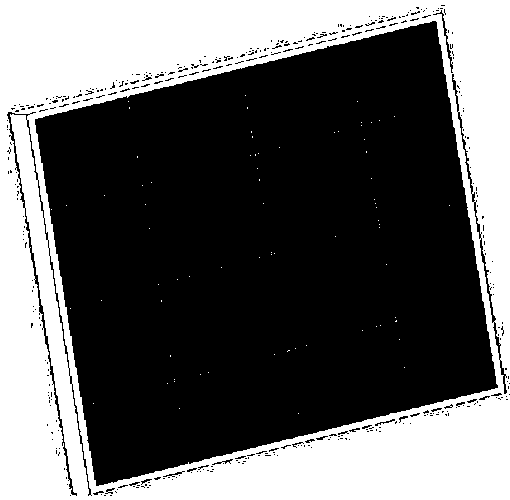Titanium-based doped titania photocatalytic net and manufacturing method thereof
A manufacturing method and nano-titanium dioxide technology, which are applied in chemical instruments and methods, physical/chemical process catalysts, chemical/physical processes, etc., can solve the problems such as the inability of supported photocatalytic nets to meet environmental protection requirements and the inability of membranes to be put into practical use. To achieve the effect of high passability, good binding force and simple process flow
- Summary
- Abstract
- Description
- Claims
- Application Information
AI Technical Summary
Problems solved by technology
Method used
Image
Examples
Embodiment 1
[0040] A method for manufacturing a titanium-based doped nano-titanium dioxide photocatalytic net, comprising the following steps:
[0041] (1) Making a photocatalytic net from a titanium-based stretched net as a base material, the photocatalytic net includes grid reinforcing wires and a molding frame arranged around the grid reinforcing wires;
[0042](2) Pretreat the photocatalytic net, place the photocatalytic net in an ultrasonic cleaning machine and use an alkaline metal cleaner to clean and remove oil; (3) Micro-arc the pretreated photocatalytic net Oxidation treatment, the time of micro-arc oxidation is 5min, and the current density is 1A / dm 2 ;
[0043] (4) Put the photocatalytic net after micro-arc oxidation treatment into a closed tank for hot water sealing, dry it, and then anneal it. The annealing temperature is 450°C, and the annealing time is 60 minutes. After cooling, the titanium-based Doped nano titanium dioxide photocatalytic mesh.
[0044] The steps for ...
Embodiment 2
[0046] Same as Example 1, the difference is:
[0047] The steps for preparing the micro-arc oxidation solution are as follows: under magnetic stirring, add sodium phosphate 8g / L, sodium fluoride 4g / L, and then add regulator sodium citrate 1.5g / L to the electrolytic cell filled with deionized water, Stabilizer sodium hydroxide 1.5g / L, and finally add nano silicon dioxide 3g / L as a dopant.
[0048] The annealing temperature is 500°C, and the annealing time is 90min.
[0049] The titanium-based doped nano-TiO produced in this embodiment 2 The semi-finished and finished products of the photocatalytic net are as follows: figure 1 , figure 2 shown.
Embodiment 3
[0051] Same as Example 1, the difference is:
[0052] The steps for preparing the micro-arc oxidation solution are as follows: under magnetic stirring, add sodium phosphate 10 / 3 g / L, sodium fluoride 5 / 3 g / L to the electrolytic cell filled with deionized water, and then add the regulator citric acid Sodium 1g / L, stabilizer sodium hydroxide 1g / L, and finally add nano silicon dioxide 5g / L as a dopant.
[0053] The annealing temperature is 550°C, and the annealing time is 120min.
PUM
| Property | Measurement | Unit |
|---|---|---|
| diameter | aaaaa | aaaaa |
Abstract
Description
Claims
Application Information
 Login to View More
Login to View More - R&D
- Intellectual Property
- Life Sciences
- Materials
- Tech Scout
- Unparalleled Data Quality
- Higher Quality Content
- 60% Fewer Hallucinations
Browse by: Latest US Patents, China's latest patents, Technical Efficacy Thesaurus, Application Domain, Technology Topic, Popular Technical Reports.
© 2025 PatSnap. All rights reserved.Legal|Privacy policy|Modern Slavery Act Transparency Statement|Sitemap|About US| Contact US: help@patsnap.com


